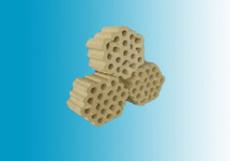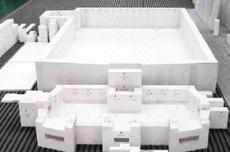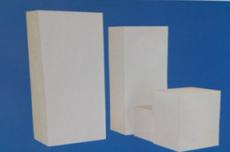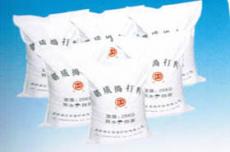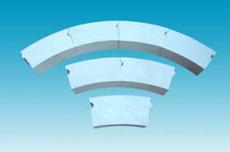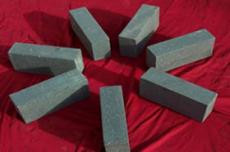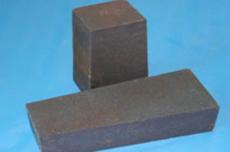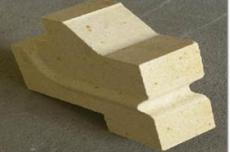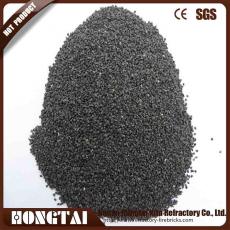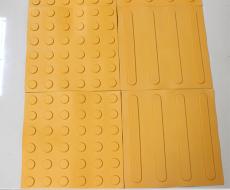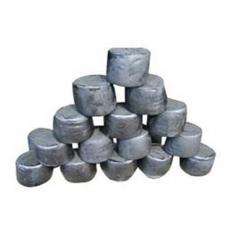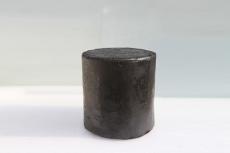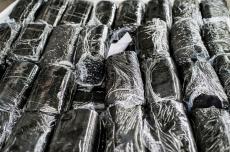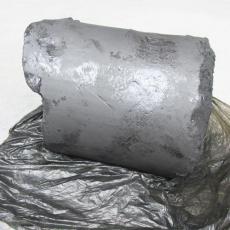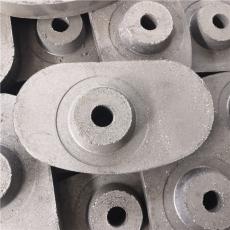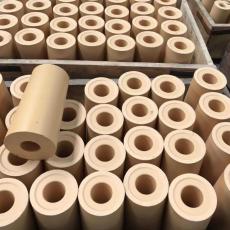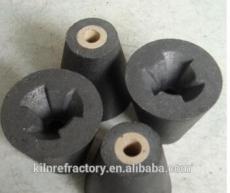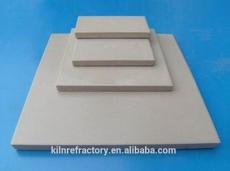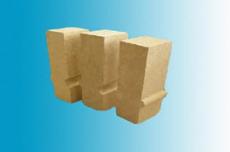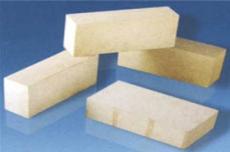
V. Refractory materials for zinc smelting
Refractory materials for zinc smelting include: refractory materials for zinc smelting roasting furnace, reduction distillation furnace and distillation equipment.
(1) Roasting furnace, the general roasting temperature is 1070~1120℃, and clay bricks and high-alumina bricks can generally meet the requirements.
(2) Reduction distillation furnace is a thermal equipment used to produce metallic zinc or crude zinc. First, 29%~33% high-quality coking coal, roasting furnace smoke ash and an appropriate amount of binder are added to the roasted sand, mixed and pressed into agglomerates, and then at 800℃, agglomerates with a certain strength are formed, which are the raw materials for the reduction distillation furnace.
Vertical tank distillation furnace: It consists of a vertical distillation tank, a combustion chamber and an air duct. The distillation tank is generally built with clay-bonded silicon carbide bricks with good heat transfer performance and high strength. Huludao Zinc Plant in my country uses silicon carbide corrugated bricks to build the inner wall of the distillation tank, which increases the heat radiation surface by about 18% compared with standard bricks. At the same time, the bricks are built into vertical grooves, which reduces the resistance of airflow, reduces the pressure in the furnace, and speeds up the reaction. When the inner wall of the tank is corroded, or holes appear locally, silicon carbide spray paint can be used for hot spraying. The working temperature of the combustion chamber is 300~1360℃, the working layer is built with silicon bricks, and the rest of the parts are built with clay bricks. The condenser, the horizontal bottom and the side wall working layer are built with high-alumina bricks, and the other parts are built with clay bricks. The condenser is equipped with a rotor, and the rotor shaft is made of graphite material. The use of silicon carbide material can significantly increase the service life.
Electric distillation furnace: It is mainly composed of a cylindrical furnace body, a condenser and an electrode heating device. The working layer of the vulnerable parts of the furnace is built with silicon carbide bricks, the working layers of the other parts are built with clay bricks, and the non-working layer is built with clay insulation bricks, which have a long service life.
(3) Distillation equipment, consisting of a melting furnace, a refining furnace, a combustion chamber, a distillation tower and a condenser.
The middle part of the distillation tower, that is, the two sides of the distillation chamber are equipped with a combustion chamber and a heat exchanger. The upper part of the tower body is equipped with a condenser, which is connected to the lead tower, cadmium tower and melting furnace through a channel. There are generally 40 to 60 trays installed in the tower, which are divided into two types: distillation trays and reflux trays. They are all made of silicon carbide materials with a thickness of 30 to 50 mm. The working layers of the condenser and various channels are generally built with silicon carbide bricks; the working layers of the melting furnace, refining furnace, combustion chamber, heat exchanger and lower extension of the distillation tower are generally built with clay bricks, and the non-working layers are built with insulation bricks such as floating bead bricks. The tower wall is built with silicon carbide bricks. The service life of the crude zinc continuous distillation and refining equipment depends on the working life of the silicon carbide trays. Its damage is mainly caused by temperature fluctuations and chemical erosion. The service life of the lead tower is generally 1 to 2 years, and the service life of the cadmium tower is 2 to 3 years.
At present, the development trend of nonferrous metallurgy is to continuously adopt new processes and technologies, update furnace equipment, strengthen smelting operations, and improve productivity. Therefore, with the large-scale and efficient nonferrous metallurgical furnaces, the types of refractory materials used are expanded, the quality is improved, and the quantity is increased.
In general, nonferrous metallurgical refractory materials account for 2%~6% of the total consumption of refractory materials, of which clay bricks account for 25%, high-alumina bricks account for 5%~16%, and basic bricks account for 10%~17%. The proportion of amorphous refractory materials is constantly increasing.
The damage mechanism of nonferrous metal linings is mainly caused by the penetration of molten metal, metal oxides or slag and the effect of temperature stress. There is a temperature gradient in the furnace lining. When molten metal, oxides or slag penetrates into the depth along the gaps or pores of the lining, three situations occur:
1) The molten metal oxidizes, reduces or forms low-melting-point minerals, causing the lining to be corroded or cracked and peeled off;
2) The molten metal or oxide is deposited, causing the lining to expand and collapse;
3) The highly alkaline molten metal or slag has strong fluidity, which causes severe scouring and erosion of the lining.
The melting point of copper is 1083℃. During the smelting process, molten metal copper penetrates into the lining, oxidizes and expands in volume. When copper is oxidized to CuO₂, the volume increases by 0.64 times, and when it is oxidized to CuO, the volume increases by 0.75 times. Due to the different changes in volume, the organizational structure of the lining cracks, cracks, and even peels off.
At a certain temperature, copper oxide can react with certain oxides in the refractory lining to form a liquid phase. For example, the eutectic point of copper oxide with SiO₂ is 1060℃, the eutectic point with MgO is 1135℃, and the eutectic point with Cr₂O₃ is above 1560℃. Due to the formation of low-melting substances, the organizational structure of the furnace lining is destroyed, and corrosion occurs, which reduces the service life. In addition, in the process of non-ferrous metal smelting, the slag contains a large amount of ferrosilicate, which seriously corrodes magnesia bricks, and corrodes magnesia-chrome bricks containing chromium spinel less. Therefore, non-ferrous metal smelting furnaces generally use magnesia-chrome bricks as linings.
Metallic copper, zinc, and especially lead are most likely to penetrate into the masonry, and continuous deposition occurs on the cold surface of the furnace lining with low oxygen partial pressure, causing the masonry to bulge into the furnace and be damaged. If the furnace lining is severely damaged, the penetration of the molten material can cause leakage accidents, directly affecting production.
During the smelting process, the sudden change of temperature in the furnace may cause the furnace lining to crack and peel off. In addition, at an appropriate temperature, SO₂ in the exhaust gas interacts with the periclase of the alkaline bricks to generate magnesium sulfate, which causes the organizational structure of the masonry to collapse and reduce the service life. Under normal conditions, the furnace lining parts that come into contact with the molten metal and slag are currently generally built with high-grade alkaline bricks, silicon carbide bricks, silicon nitride bricks or quartz bricks, and the use effect is better.
